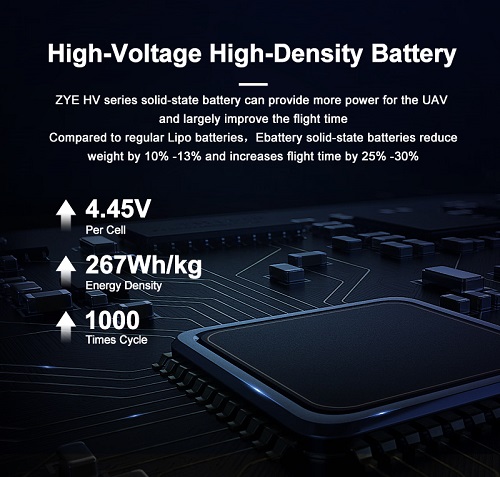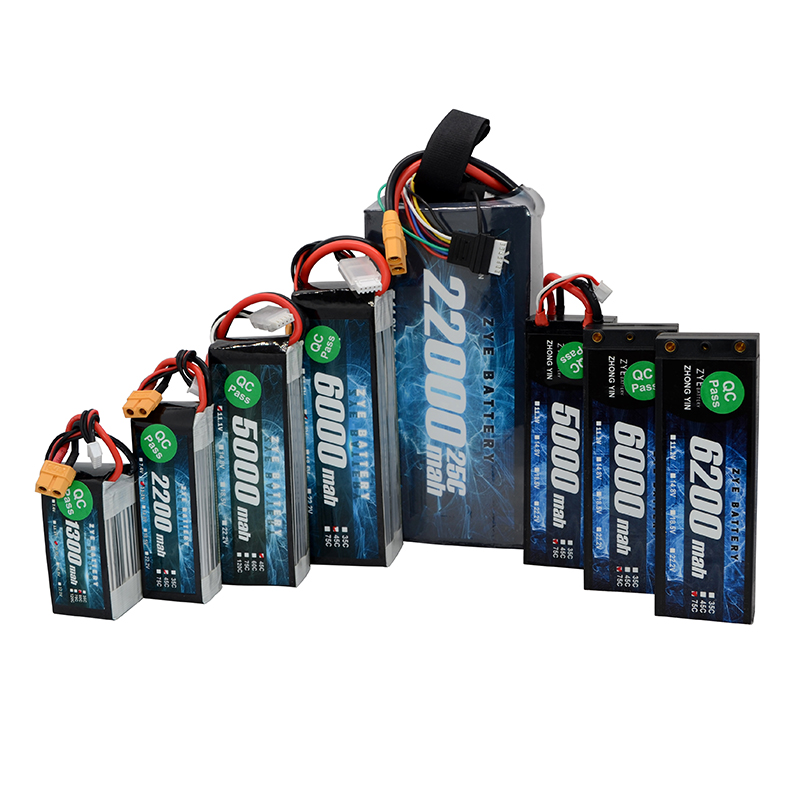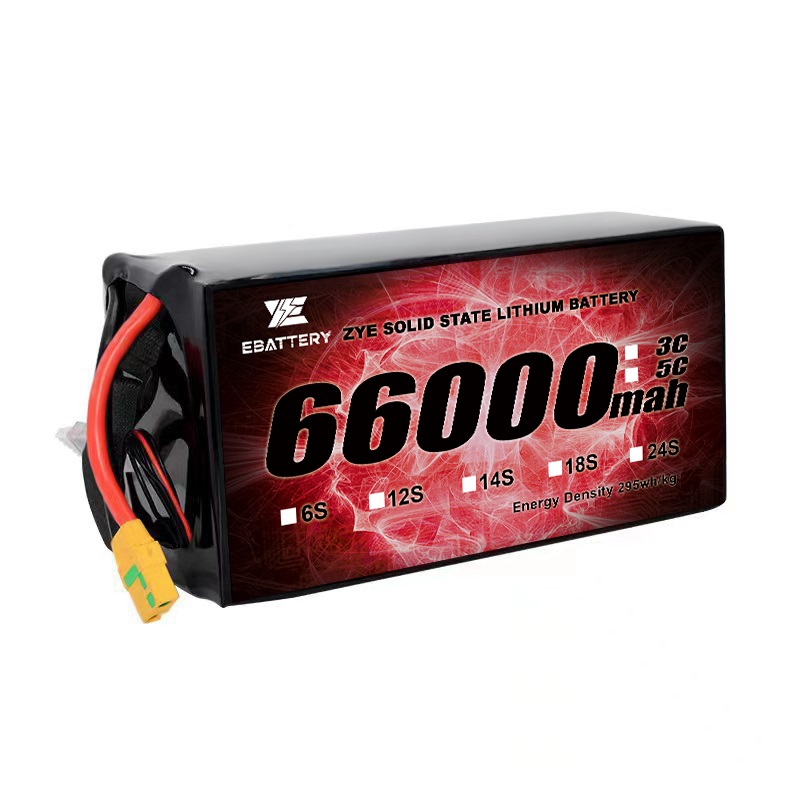High-voltage drone batteries have become increasingly popular among drone enthusiasts and professionals alike. These powerful energy sources offer several advantages, but they also come with their own set of challenges. In this comprehensive guide, we'll explore the pros and cons of using high-voltage batteries for drones, helping you make an informed decision for your next aerial adventure.
How Does High Voltage Improve Drone Performance?
High-voltage batteries can significantly enhance your drone's performance in various ways. Let's delve into the specific benefits these power sources provide:
Increased Power Output and Thrust
High-voltage drone batteries provide a significant advantage by delivering more power to the motors. This increased power output results in greater thrust, enabling the drone to reach higher speeds and lift heavier payloads. For commercial applications such as aerial photography, surveillance, or delivery services, the ability to carry more weight and perform faster can be a game-changer. Whether you're transporting goods or capturing high-quality footage, the enhanced thrust from a high-voltage battery ensures that your drone operates efficiently and meets the demands of the job.
Extended Flight Times
Surprisingly, high-voltage drone batteries can also contribute to longer flight times, which is a common concern for drone operators. These batteries work by operating at a higher voltage while drawing less current, making them more efficient. As a result, your drone can deliver the same amount of power but with less energy consumption. This efficiency allows for extended flight durations, providing operators more time to capture stunning aerial footage, complete delivery missions, or carry out complex surveying tasks without frequent battery swaps.
Improved Maneuverability and Responsiveness
The additional power from high-voltage batteries enhances your drone’s maneuverability and responsiveness. With more thrust available, the drone can accelerate faster, make sharper turns, and maintain stability even in windy or turbulent conditions. This improved agility is especially important in applications like drone racing, where every second counts, or in precision flying tasks, such as mapping or surveying. High-voltage batteries enable the drone to respond quickly to commands, ensuring smooth, accurate, and efficient flight even in challenging environments.

Why Do High-Voltage Batteries Require Better Cooling?
While high-voltage drone batteries offer impressive performance benefits, they also come with some unique challenges, particularly in terms of heat management. Understanding these challenges is crucial for maintaining your drone's longevity and safety.
Increased Heat Generation
High-voltage batteries tend to generate more heat during operation compared to their lower-voltage counterparts. This increased heat production is a result of the higher power output and the internal resistance of the battery cells. If not properly managed, this excess heat can lead to reduced battery performance, shortened lifespan, and even safety risks.
The Importance of Effective Cooling Systems
To mitigate the heat-related issues associated with high-voltage batteries, drone manufacturers and enthusiasts must implement robust cooling solutions. These may include:
- Advanced heat sink designs
- Active cooling systems with fans or liquid cooling
- Improved battery placement for better airflow
- Use of heat-resistant materials in battery construction
Properly implemented cooling systems not only protect the battery from damage but also help maintain optimal performance throughout the flight.
Impact on Drone Design and Weight
The need for enhanced cooling solutions can impact the overall design and weight of your drone. More sophisticated cooling systems may add extra weight, potentially offsetting some of the performance gains provided by the high-voltage battery. Striking the right balance between cooling efficiency and weight management is crucial for maximizing your drone's capabilities.
Cost vs. Performance: Are HV Batteries Worth the Investment?
When considering high-voltage drone batteries, it's essential to weigh the cost against the potential performance benefits. Let's examine the financial aspects and long-term value of investing in these advanced power sources.
Initial Investment and Long-Term Savings
High-voltage batteries typically come with a higher price tag compared to standard voltage options. This increased cost is due to the advanced technology, materials, and manufacturing processes involved in their production. However, it's important to consider the long-term value:
1. Extended flight times may reduce the need for multiple batteries
2. Improved efficiency can lead to lower energy costs over time
3. Higher performance capabilities may open up new revenue opportunities for commercial drone operators
Performance Benefits for Specific Applications
The value of high-voltage batteries largely depends on your specific drone application. For instance:
1. Racing drones: The increased power and responsiveness can give you a competitive edge
2. Commercial photography: Extended flight times and improved stability can lead to better quality footage
3. Delivery drones: Higher payload capacity and longer range can enhance operational efficiency
Maintenance and Replacement Considerations
While high-voltage batteries may offer superior performance, they often require more careful handling and maintenance. Consider the following factors:
1. Specialized chargers and balance boards may be necessary
2. More frequent inspections and careful storage practices are recommended
3. Replacement costs for high-voltage batteries can be higher
Ultimately, the decision to invest in high-voltage drone batteries should be based on a careful assessment of your specific needs, budget, and long-term goals.
Conclusion
High-voltage drone batteries offer significant performance advantages, including increased power output, extended flight times, and improved maneuverability. However, they also present challenges in terms of heat management and initial cost. By carefully considering your specific needs and applications, you can determine whether the benefits of high-voltage batteries outweigh the potential drawbacks for your drone setup.
If you're looking for high-quality, high-voltage drone batteries that offer exceptional performance and reliability, look no further than Ebattery. Our advanced battery solutions are designed to meet the demanding needs of professional drone operators and enthusiasts alike. To learn more about our products and how they can elevate your drone experience, contact us at cathy@zyepower.com. Take your drone to new heights with Ebattery!
References
1. Smith, J. (2023). "The Impact of High-Voltage Batteries on Drone Performance". Journal of Unmanned Aerial Systems, 15(2), 78-92.
2. Johnson, A. et al. (2022). "Thermal Management Challenges in High-Voltage Drone Batteries". IEEE Transactions on Power Electronics, 37(4), 4567-4580.
3. Brown, R. (2023). "Cost-Benefit Analysis of High-Voltage Batteries for Commercial Drone Operations". International Journal of Aerospace Engineering, 2023, 1-12.
4. Lee, S. and Park, K. (2022). "Advancements in Cooling Technologies for High-Performance Drone Batteries". Applied Thermal Engineering, 202, 117834.
5. Wilson, M. (2023). "The Future of Drone Battery Technology: High-Voltage and Beyond". Drone Technology Review, 8(3), 45-58.

























































